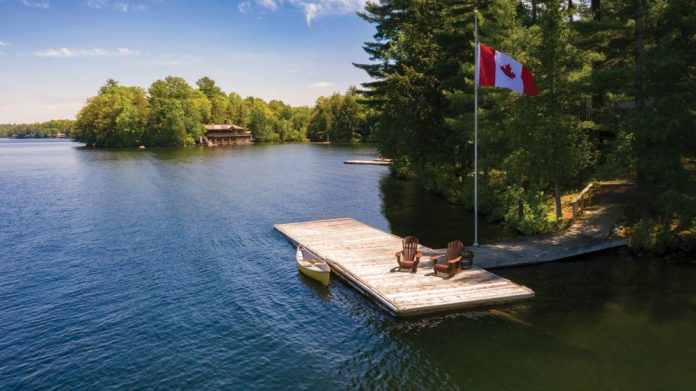By Tim Winegard
If you are in the market for a cottage property, or recently made the leap into ownership, Muskoka Tree Solutions would like to welcome you to the neighbourhood. We’d like to share a few tips for understanding the management of your new forested property, and what this means for you as you start your cottage adventure.
Whether you are looking for a forested retreat or a lakefront getaway, many new and prospective cottage owners fail to consider how tree maintenance and forest management requirements can vary drastically from one property to another in Muskoka. Much like home inspectors provide peace of mind regarding your new cottage, arborists can provide valuable insight into the health, potential management expense or risk from the trees on your property.
Not All Forests Are Equal
First and foremost, your forest type, species suitability to the growing conditions, and age makeup will be key to understanding the frequency and cost of maintenance for most properties. Young, regenerating forests made up of fast-growing, “short-lived” species may require active management efforts as the trees are gradually replaced over time by longer-lived types. Properties of mature pines, oaks or hardwood combinations may require fewer mature tree removals, but focused pruning and thinning to promote tree health and safety.
Forests are dynamic, and the natural life history of your trees will dictate much of their potential maintenance expense. (To learn more about the forest types in Muskoka, or the management objectives for a variety of native species, have a look at our articles “Nurturing Nature: Your Guide to Muskoka Forest Management,” or “At One with Nature: Cottage Community Forest Management” at muskokasolutions.com.)
Forest Red Flags
How close are your trees to the cottage, hydro lines or garage, and do they lean towards or away from this infrastructure? Trees reach for sun gaps in the canopy, which often occur over these key areas. Properties with a significant number of large, mature trees within reach of the cottage, or trees with potentially hazardous leans, will require more maintenance over time to reduce their weight, lean, and material deposition on the roof.
Additionally, trees leaning into the home should be monitored for signs of root, insect or fungal-related decline that may signal it is time for removal. (To learn more, check out our recent article, “Love your Trees! Alternatives to Removal that Save Time and Money” in Cayman Marshall’s Spring 2022 issue.)

Building A Future Forest
Are you looking at a newly cleared lot or planning to build? If so, planting and maintaining regenerating trees may be your main management expense. Having a plan for how those future trees will grow up to influence your shade, privacy and views are all important considerations before planting.
Our native species provide a number of valuable contributions to reducing erosion and runoff, reducing heating and cooling expenses, as well as their aesthetic benefits. (To learn more about how trees can be used to accomplish a variety of beneficial outcomes on your property, check out “Making the Cut,” or “Preserving Paradise: Pre-development Considerations for Cottage Country,” both available on our website.)
Nurturing For Nature’s Sake
Trees are an important contributor to the ecological health of Muskoka. Non-hazardous dead standing trees and downed woody material can provide habitat and food sources for a wide array of wildlife. Knowing how your trees contribute to the local ecology of your forest community can help you make informed decisions for your prospective property’s management. (Check out our articles “The Good, The Bad, and the Ugly: Balancing Aesthetics and Wildlife Needs in Muskoka,” or “Muskoka’s Natural Heritage: How to Help it Thrive” at muskokasolutions.com.)
No matter where your little slice of Muskoka paradise is found, trees make your property unique. Everyone has a unique vision for their property and what they would like to accomplish. We all have our favourite trees, and maybe a few types that we like the least. We might prefer a rustic, life-in-the-canopy aesthetic or a woodland feel. But no matter what type of forest calls us, we have all chosen to live with trees close to our homes for the benefits they provide.

Consulting with an arborist at Muskoka Tree Solutions is a great way to better understand your piece of paradise, and to ensure tree-related issues don’t interrupt your lake time this summer.



